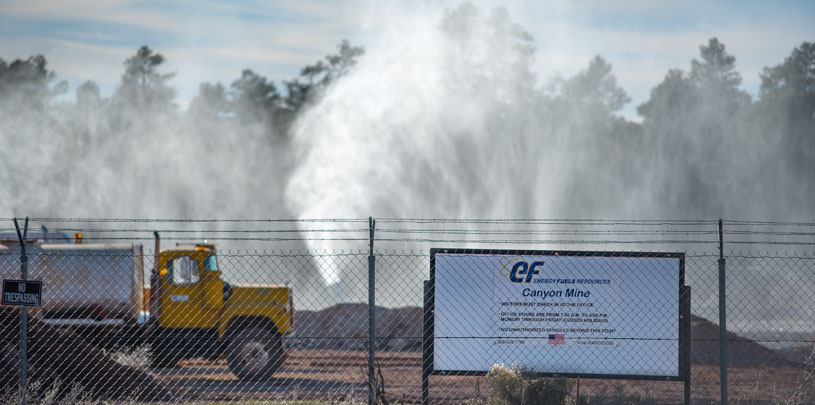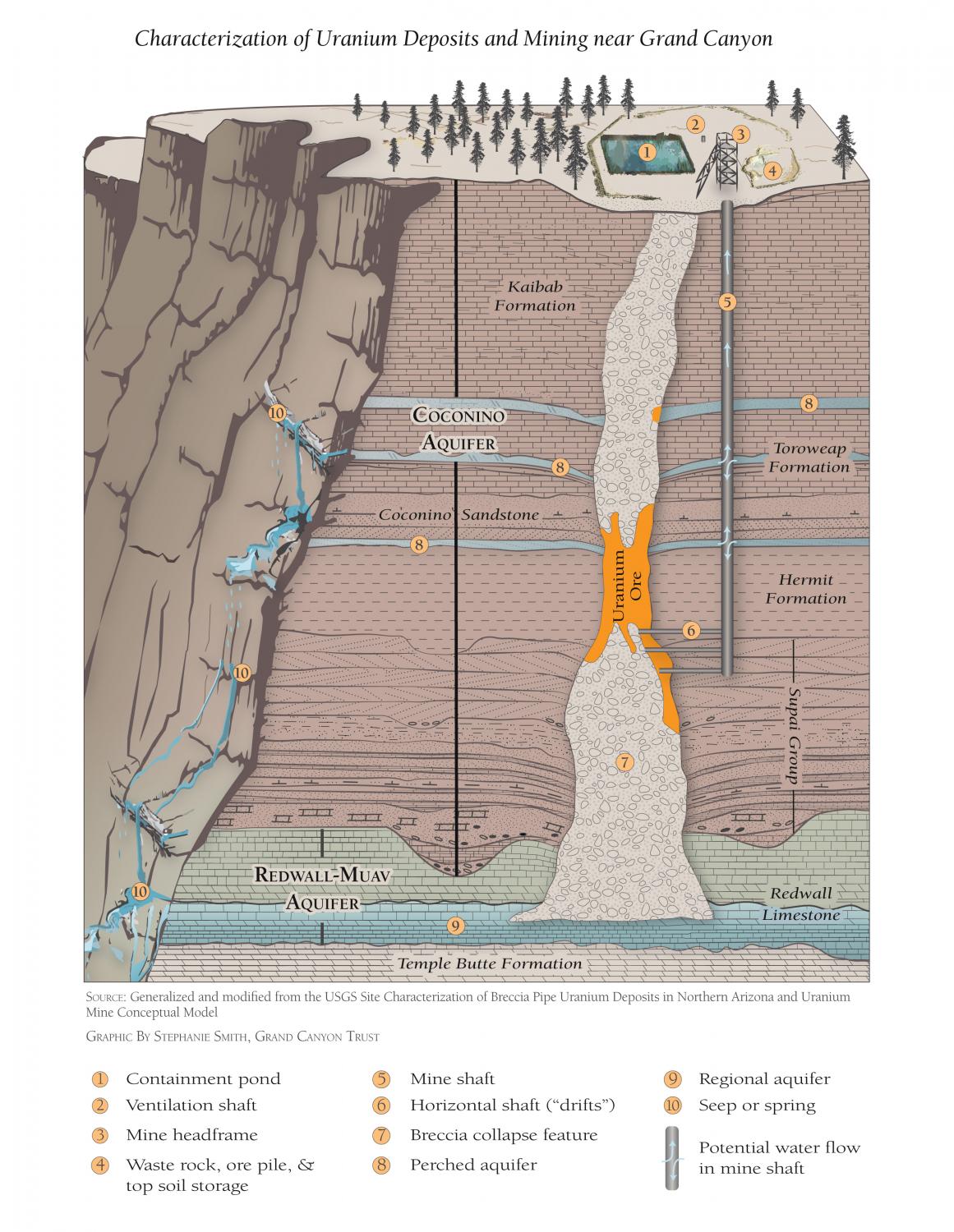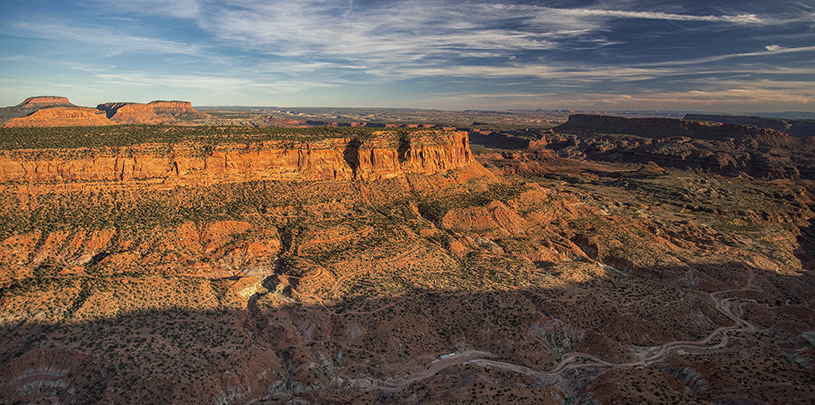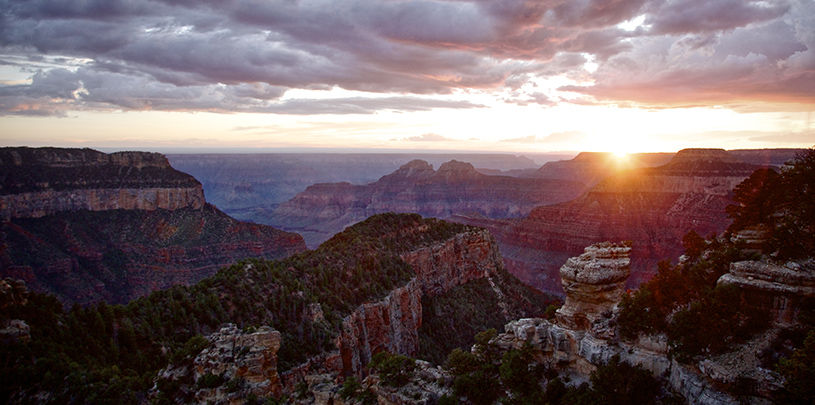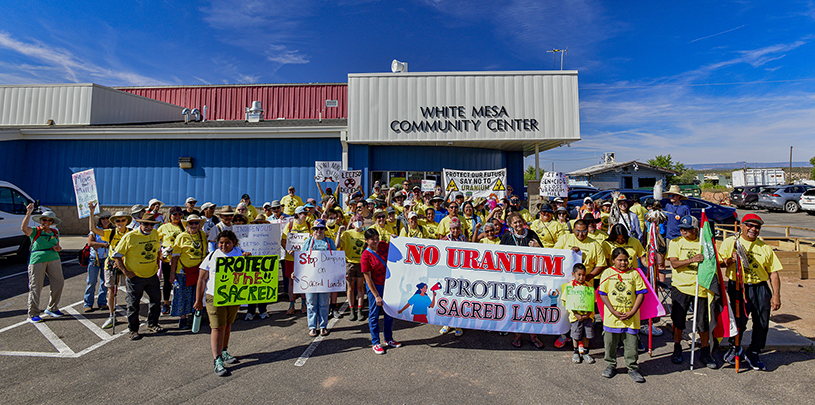
Since 2013, millions of gallons of contaminated water have inundated Canyon Mine, a uranium mine on the doorstep of Grand Canyon National Park. Hydrologists had long warned that flooding like this was possible, but mine owners claimed it would never happen. Once exposed during mining, previously stabilized uranium can pollute aquifers, seeps, springs, and surface waters.
As luck would have it, the permit that regulates pollutants that the mine discharges into groundwater just happens to be up for renewal this month, and the Arizona Department of Environmental Quality (ADEQ) has the chance to permanently close and order the cleanup of the uranium mine, which sits less than 10 miles from our crown jewel national park.
Now is the time to ask Arizona regulators to stop risking the contamination of Grand Canyon waters and close Canyon Mine for good. Email ADEQ ›
What’s an aquifer protection permit?
The permit that’s up for renewal is called an aquifer protection permit. It’s required for mines since they can discharge harmful substances like dissolved uranium into the groundwater.
Original mine approvals dismissed flooding as a “remote” possibility. Clearly it’s not.
In 2013, the mine operator reported having removed more than a quarter million gallons of water from the mine shaft. And in 2016, mine-shaft drilling pierced shallow aquifers. The company pumped nearly 1 million gallons of groundwater out of the mine that year. Floodwaters surged up to 9 million gallons in 2017, and, lacking adequate wastewater storage, miners sprayed contaminated water into the air on Kaibab National Forest. In 2018, 10 million gallons of water flooded the mine, with dissolved uranium concentrations consistently exceeding federal limits by 3-4 times safe-drinking standards. The water that’s flowing into the mine shaft comes from the Coconino Aquifer, which itself doesn’t show these levels of uranium — at least at the single monitoring well (the Grand Canyon Trust believes there should be more) that samples from that formation.
Canyon Mine’s current aquifer protection permit expires on August 31. Given the increasing volume of groundwater pouring into the mine during the last several years, federal and state regulators need to cancel current operating permits that are failing to prevent groundwater from flooding the mine and protect the underlying aquifer from permanent harm.
Why does mine-shaft flooding risk Grand Canyon waters?
Canyon Mine’s shaft cuts down through the Grand Canyon’s first five layers of rock, stopping above the underground aquifer that feeds hundreds of springs and seeps in the Grand Canyon.
There isn’t adequate monitoring in place to ensure the contaminated floodwaters will not leak into the aquifer and the Grand Canyon springs and wells it feeds, including the sole source of drinking water for the Havasupai, and the springs that burst forth at the popular Indian Garden. If contamination did occur, it’s likely to be irreversible.
Springs and seeps in the Grand Canyon are lifelines for plants, animals, and people, supporting more than 500 times the species of surrounding desert lands.
READ: Threatened Waters: Grand Canyon’s Seeps and Springs
Early concerns about contamination
In 1986, the Kaibab National Forest supervisor concluded there was a low possibility of encountering groundwater in the mine, and thus a low probability of the mine contaminating the underlying aquifer.
But Gary Ullinsky, a state water quality specialist, sent an internal memo to his supervisor at the Arizona Department of Health Services a month later carefully outlining his concerns about Canyon Mine’s potential to pollute groundwater.
Ullinsky had asked for records of borehole testing to verify the company’s claim that the mining zone was dry to depths of 1,400 feet. He discovered that more than half of the 18 exploration holes “encountered saturated zones,” confirming the presence of perched aquifers above and within what would become the mine’s ore cavities, vertical shafts, and lateral tunnels.
Ullinsky’s memo notes that usable quantities of water had been found in the area at depths of fewer than 150 feet. In conclusion, he said, “I have developed a mistrust of the accuracy of the information supplied by EFN [Canyon Mine’s then owners].”
Other hydrologists have since echoed Ullinsky’s concerns about contamination.
Calling on ADEQ to Close Canyon Mine
The Grand Canyon Trust and allies recently submitted comments to ADEQ calling for the immediate closure of Canyon Mine. Meanwhile, a spokesperson for the mine reportedly said last week that nothing is wrong with the mine or the water flooding out of it.
If the company’s past tales about risk are any indication of the assurances they’re giving today, we don’t feel reassured. Do you?
Please join us in submitting your own comments to ADEQ at dunaway.david@azdeq.gov asking for the immediate closure of Canyon Mine.
Write a letter:
Misael Cabrera, P.E., Director
Trevor Baggiore, Water Quality Division Director
Arizona Department of Environmental Quality
1110 West Washington Street
Phoenix, AZ 85007

